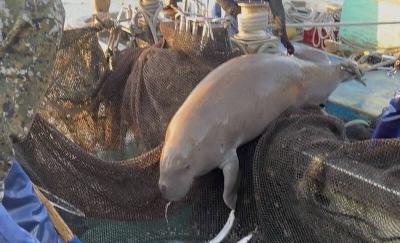Beijing is developing a variety of "credible military options" to prevent Taiwan from achieving independence, including tools to discourage the US from coming to the Taipei's aid in a conflict with China, the US Department of Defense warned in a new report.
They have been fueled lately by President Chen Shui-bian's (
According to the Pentagon survey, Chinese political leaders as well as commanders of the People's Liberation Army (PLA) are not remaining idle in the face of these challenges.
"The PLA's offensive capabilities improve each year and provide Beijing with an increasing number of credible options to intimidate and actually attack Taiwan," the department said in its annual report on China's military might sent to Congress at the end of the week.
China's arsenal arrayed against Taiwan includes approximately 500 short-range ballistic missiles deployed in Nanjing military district.
If equipped with adequate guidance systems, these missiles could destroy key leadership facilities, military bases and communication and transportation nodes with minimal advanced warning, Pentagon analysts point out.
Some of these weapons are believed to be capable of hitting US military bases in Okinawa.
Taiwan still maintains a qualitative edge over China in air power, boasting three times as many modern so-called "fourth-generation" fighter jets as China. But Beijing is working hard to close the gap.
China's air force now has nearly 3,400 aircraft, and its share of fourth-generation planes, mainly Su-27 and Su-30 fighter-bombers purchased from Russia, is increasing steadily, the report pointed out.
"Over the next several years, given current trends, China most likely will be able to cause significant damage to all of Taiwan's airfields and quickly degrade its ground-based air defenses and associated command and control," the document warned.
Ground forces targeting Tai-wan include three army groups in Nanjing that include a plethora of special operations units.
But the Pentagon believes Bei-jing would have trouble mounting a D-Day-style invasion of Taiwan "throughout the remainder of the decade" primarily because of its lack of a credible amphibious lift capability.
Chinese military planners believe the US will likely come to Taiwan's rescue in case of its showdown with China, according to the report. To counter US aid, the Chinese military are likely to use naval mines, submarine and cruise missile to attack a US aircraft carrier.
It may even resort to high-altitude nuclear blasts in the hope that its electromagnetic effects would interrupt communications and jam radars, the Pentagon warned.
The report contains sharp criticism of Taiwan's army, which it says "has major shortcomings in training and reservist mobiliza-tion." Naval operations "are not well integrated with those of the army and air force, and multi-mission training is infrequent," it said.
The report is like to spark calls for larger US military assistance to Taiwan in Congress.
A pro-Taiwan amendment has already been introduced in a US$422.2 billion defense authorization bill that passed the House of Representatives earlier this month. The amendment, sponsored by Representative Jim Ryun, calls for senior military officer exchanges with Taipei.

‘DENIAL DEFENSE’: The US would increase its military presence with uncrewed ships, and submarines, while boosting defense in the Indo-Pacific, a Pete Hegseth memo said The US is reorienting its military strategy to focus primarily on deterring a potential Chinese invasion of Taiwan, a memo signed by US Secretary of Defense Pete Hegseth showed. The memo also called on Taiwan to increase its defense spending. The document, known as the “Interim National Defense Strategic Guidance,” was distributed this month and detailed the national defense plans of US President Donald Trump’s administration, an article in the Washington Post said on Saturday. It outlines how the US can prepare for a potential war with China and defend itself from threats in the “near abroad,” including Greenland and the Panama

A wild live dugong was found in Taiwan for the first time in 88 years, after it was accidentally caught by a fisher’s net on Tuesday in Yilan County’s Fenniaolin (粉鳥林). This is the first sighting of the species in Taiwan since 1937, having already been considered “extinct” in the country and considered as “vulnerable” by the International Union for Conservation of Nature. A fisher surnamed Chen (陳) went to Fenniaolin to collect the fish in his netting, but instead caught a 3m long, 500kg dugong. The fisher released the animal back into the wild, not realizing it was an endangered species at

The High Prosecutors’ Office yesterday withdrew an appeal against the acquittal of a former bank manager 22 years after his death, marking Taiwan’s first instance of prosecutors rendering posthumous justice to a wrongfully convicted defendant. Chu Ching-en (諸慶恩) — formerly a manager at the Taipei branch of BNP Paribas — was in 1999 accused by Weng Mao-chung (翁茂鍾), then-president of Chia Her Industrial Co, of forging a request for a fixed deposit of US$10 million by I-Hwa Industrial Co, a subsidiary of Chia Her, which was used as collateral. Chu was ruled not guilty in the first trial, but was found guilty

DEADLOCK: As the commission is unable to forum a quorum to review license renewal applications, the channel operators are not at fault and can air past their license date The National Communications Commission (NCC) yesterday said that the Public Television Service (PTS) and 36 other television and radio broadcasters could continue airing, despite the commission’s inability to meet a quorum to review their license renewal applications. The licenses of PTS and the other channels are set to expire between this month and June. The National Communications Commission Organization Act (國家通訊傳播委員會組織法) stipulates that the commission must meet the mandated quorum of four to hold a valid meeting. The seven-member commission currently has only three commissioners. “We have informed the channel operators of the progress we have made in reviewing their license renewal applications, and